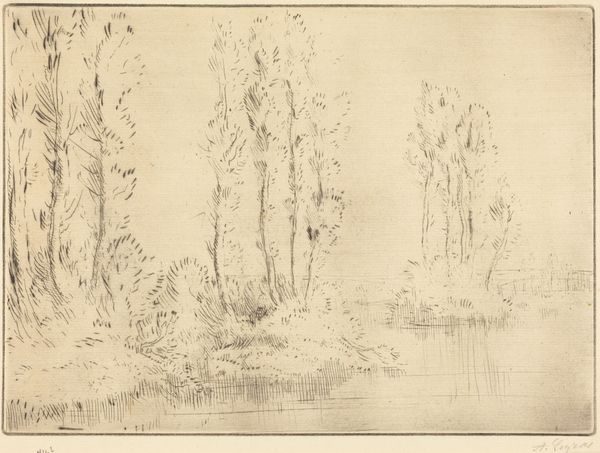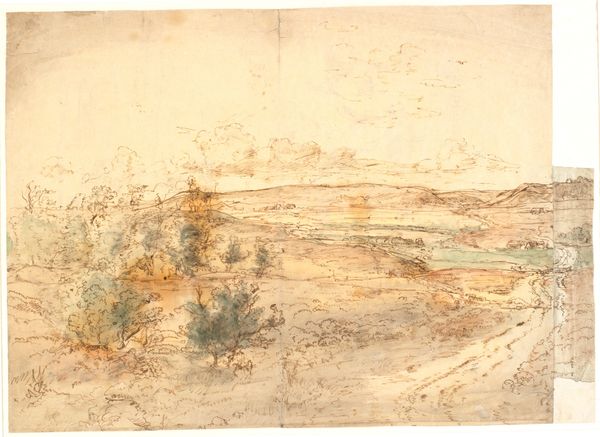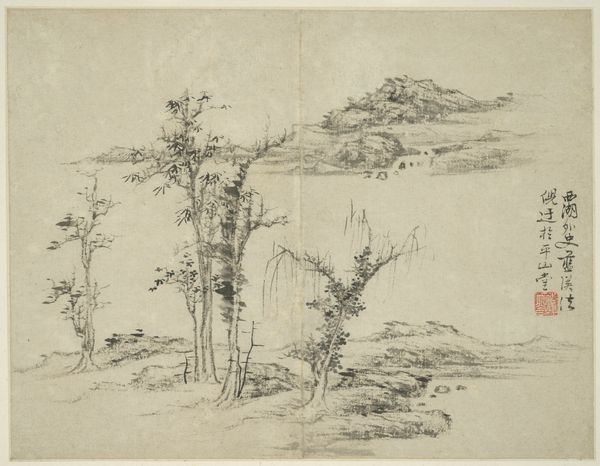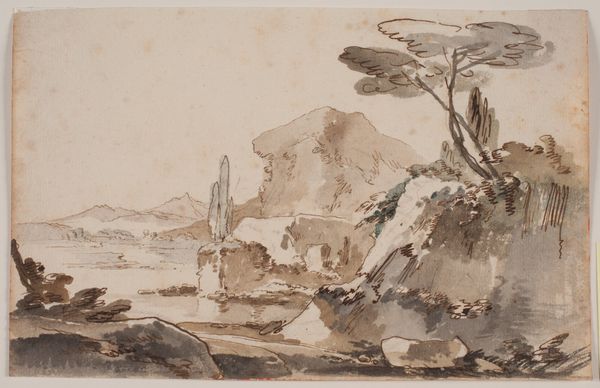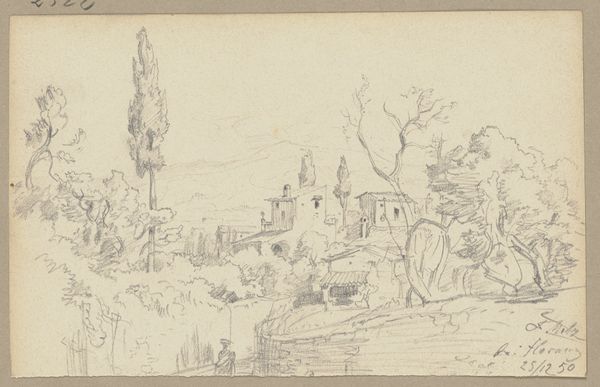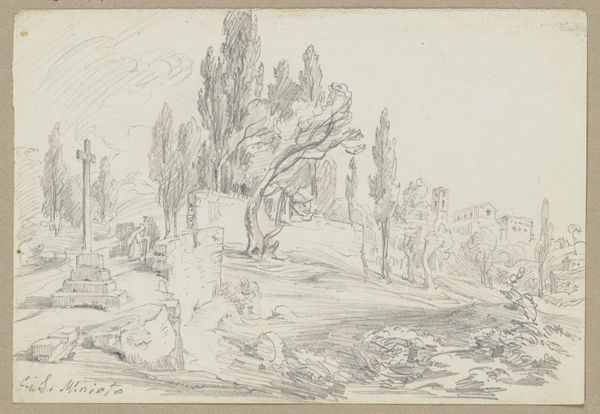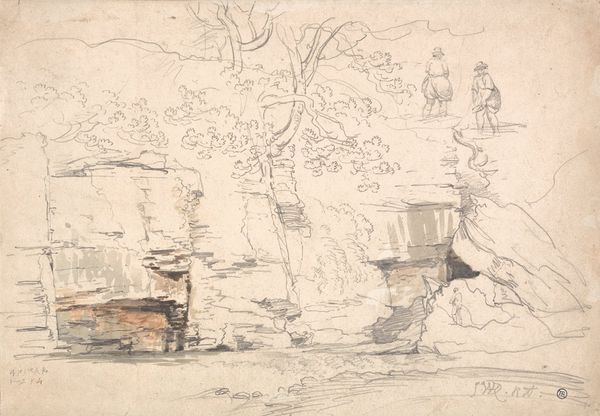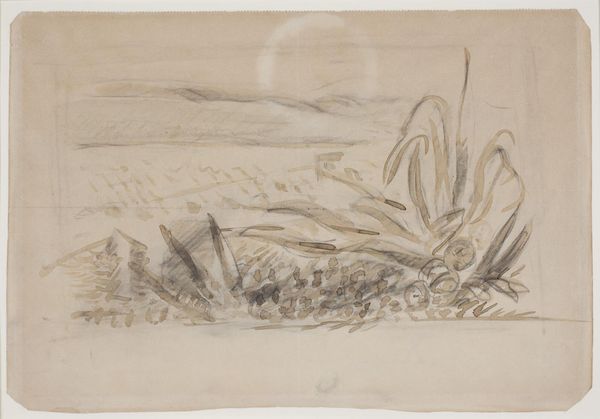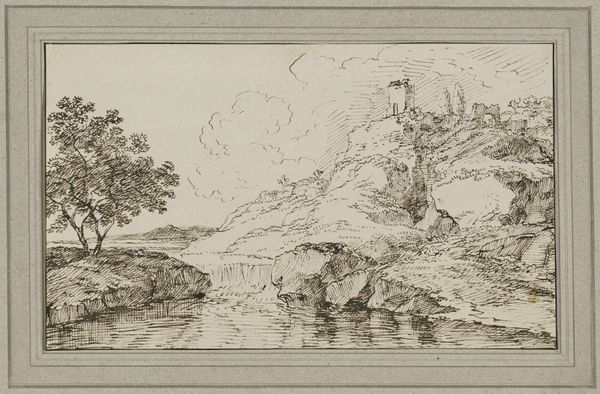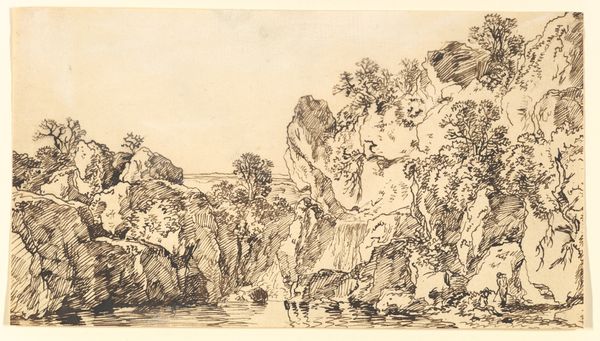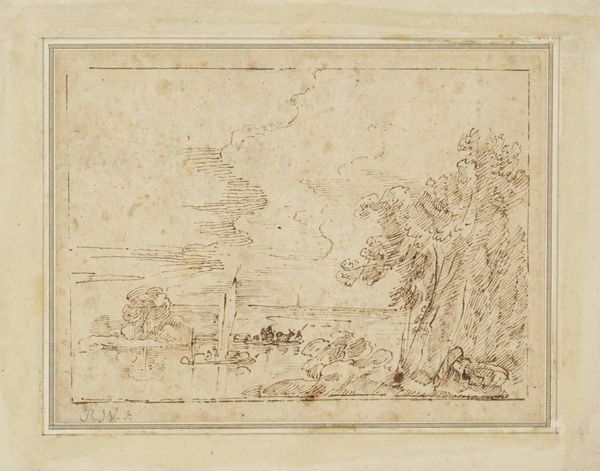
drawing, watercolor, ink
#
drawing
#
ink painting
#
landscape
#
watercolor
#
ink
#
cityscape
Dimensions: 140 mm (height) x 210 mm (width) (bladmaal)
Editor: Here we have Jens Petersen Lund's "Romersk" prospekt, created sometime between 1730 and 1793, using ink, watercolor, and drawing techniques. It feels like a scene of serene decay; I’m drawn to the juxtaposition of nature reclaiming these classical ruins. How do you interpret this work, especially considering its historical context? Curator: The "Romersk" prospekt offers a powerful lens through which to view the shifting dynamics of power and identity in 18th-century Europe. We see Rome, a historical centre of imperial authority, not in its triumphal glory, but as a site of ruin and romantic contemplation. Think about how the landscape genre itself was used to signify ownership and control. Here, however, nature’s encroachment on these ruins subtly undermines that claim. How does this imagery speak to contemporary notions of cultural heritage and its ownership, particularly in light of colonial exploitation? Editor: That's a fascinating point! I hadn’t considered the implications of ownership. The artist’s choice to focus on decay makes me wonder if this reflects a broader cultural anxiety about the decline of empires or a commentary on the fleeting nature of power. Curator: Exactly! And it pushes us to think about who has the power to represent history. Is this a neutral depiction, or is it shaped by the artist's own social and political perspectives? The fact that it's a Danish artist portraying Rome already introduces an interesting layer of distance and interpretation. Editor: So, the artwork isn't just a pretty landscape, it's actively engaging with ideas of cultural heritage and the power dynamics inherent in how we perceive and present history. Curator: Precisely. By examining the visual language employed and the historical context, we can unpack the complex narratives embedded within this seemingly simple scene, revealing how art can function as both a reflection of and an intervention in social and political discourses. Editor: This makes me think differently about landscape art; thank you for shedding light on the importance of deconstructing these works.
Comments
No comments
Be the first to comment and join the conversation on the ultimate creative platform.
